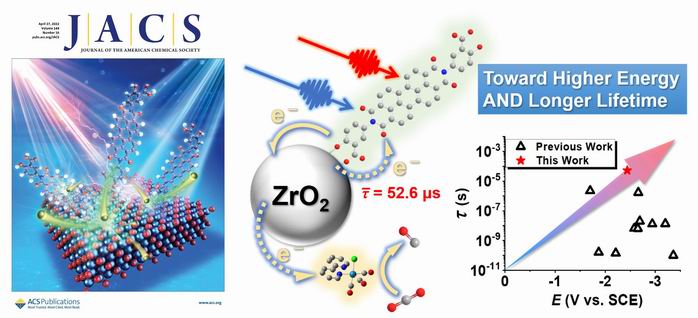Photoexcitation of molecular radicals can produce strong reducing agents; however, the limited lifetimes of the doublet excited states preclude many applications. Herein, we propose and demonstrate a general strategy to translate a highly energetic electron from a doublet excited state to a ZrO2 insulator, thereby increasing the lifetime by about 6 orders of magnitude while maintaining a reducing potential less than −2.4 V vs SCE. Specifically, red light excitation of a salicylic acid modified perylene diimide radical anion PDI•− anchored to a ZrO2 insulator yields a ZrO2(e−)|PDI charge separated state with an ∼10 μs lifetime in 23% yield. The ZrO2(e−)s were shown to drive CO2 → CO reduction with a Re catalyst present in micromolar concentrations. More broadly, this strategy provides new opportunities to reduce important reagents and catalysts at low concentrations through diffusional electron transfer.
https://pubs.acs.org/10.1021/jacs.2c00422

